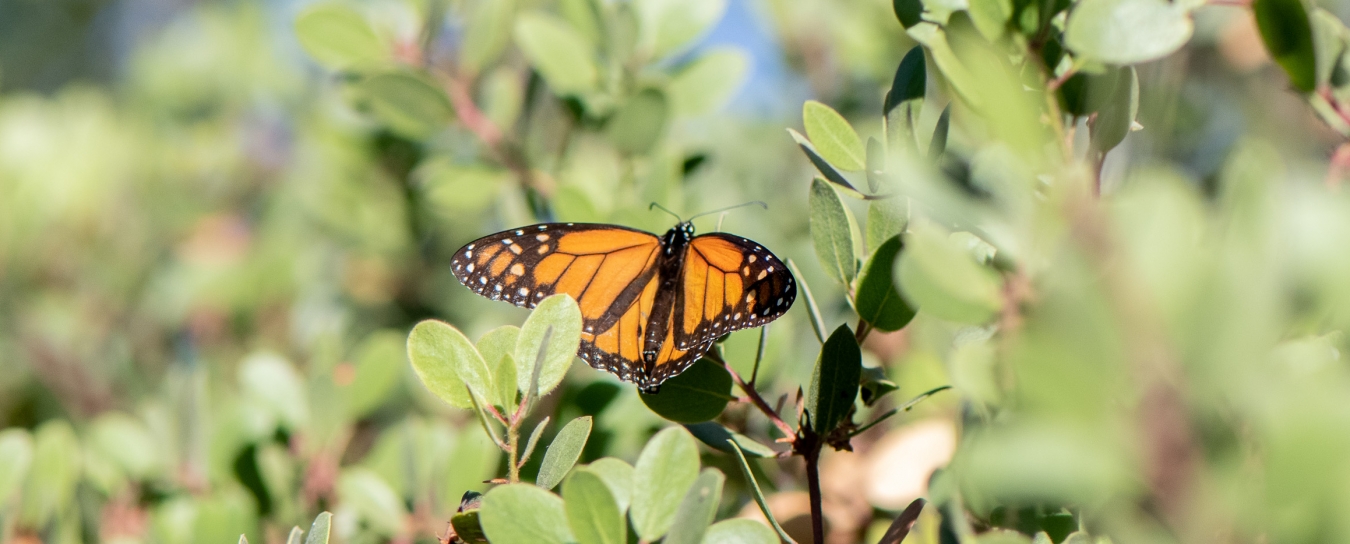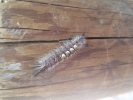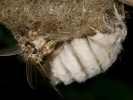
Invertebrates
See our handy guide to critters found in local homes and our Central Coast Butterfly FAQ. Browse the insects and other terrestrial arthropods we’ve identified. Check out local marine invertebrates, particularly bivalve mollusks and intertidal organisms.
- Anthropology
- Rocks & Fossils
- Invertebrates
- Vertebrates
- Botany
- Astronomy
- Fungi
- General
- Recently Asked
Found a caterpillar
My son and I found this little guy on a walk up to Nojoqui falls. I think it must be a moth but I've never seen one like this. Is the museum interested in hearing about every odd plant and bug we find? Or has most of the local area been thoroughly researched? And can you tell me what kind of moth this could be?

Curator Response
Dear Christian,
This is indeed a moth caterpillar, that of the Western Tussock Moth (Orgyia vetusta). They are highly distinctive because of their four thick tufts of setae (our term for hairs on insects) on the back, arranged like smoke stacks on a steamship, plus long, thin black tufts on both ends of the caterpillar. In your photo, the back tufts are light-colored with darker tips, but these can actually be different colors in other individuals, even black or orange. They also have red, yellow, and sometimes blue spots along the body. Fancy critters! As you might expect, those hairs serve a protective function, and in some sensitive people can cause an irritating skin reaction when touched.
These caterpillars are commonly found in our area, particularly during the spring, and have been reported feeding on leaves of a variety of trees, including Coast Live Oaks and trees and shrubs in the rose family (apples, plums, pyracantha, etc.). The adult male moth has a wingspan of a little over an inch, and is mottled brown with fancy antennae (for finding females emitting pheromones), but the adult female is actually wingless! She looks like a rounded hairy gray pouch with legs, and is one of the few moths in the world that has no wings as an adult. She doesn’t wander very far from her cocoon to lay her eggs. See the attached photo by Larry Friesen of a male (left) attracted to a newly-emerged female (right).
We always love hearing about what insects and other critters people are finding out there, particularly if there is a good photo and an exact time and locality included! It’s true that some of the larger and more colorful insects are better known in our area, but so many aspects of the biology of the thousands of insect species in our region are poorly known, so you never know when you might come across a new discovery!
Thanks for sharing!
Matthew L. Gimmel, Schlinger Foundation Chair and Curator of Entomology



